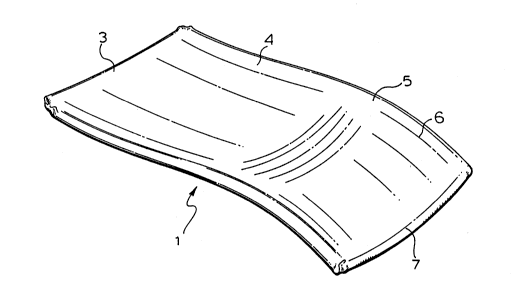Une partie des informations de ce site Web a été fournie par des sources externes. Le gouvernement du Canada n'assume aucune responsabilité concernant la précision, l'actualité ou la fiabilité des informations fournies par les sources externes. Les utilisateurs qui désirent employer cette information devraient consulter directement la source des informations. Le contenu fourni par les sources externes n'est pas assujetti aux exigences sur les langues officielles, la protection des renseignements personnels et l'accessibilité.
L'apparition de différences dans le texte et l'image des Revendications et de l'Abrégé dépend du moment auquel le document est publié. Les textes des Revendications et de l'Abrégé sont affichés :
| (12) Brevet: | (11) CA 2054992 |
|---|---|
| (54) Titre français: | PLANCHE POSTURALE |
| (54) Titre anglais: | POSTURE BOARD |
| Statut: | Périmé |
| (51) Classification internationale des brevets (CIB): |
|
|---|---|
| (72) Inventeurs : |
|
| (73) Titulaires : |
|
| (71) Demandeurs : |
|
| (74) Agent: | DENNISON ASSOCIATES |
| (74) Co-agent: | |
| (45) Délivré: | 1997-01-14 |
| (22) Date de dépôt: | 1991-11-05 |
| (41) Mise à la disponibilité du public: | 1993-05-06 |
| Requête d'examen: | 1993-06-08 |
| Licence disponible: | S.O. |
| (25) Langue des documents déposés: | Anglais |
| Traité de coopération en matière de brevets (PCT): | Non |
|---|
| (30) Données de priorité de la demande: | S.O. |
|---|
The posture board according to the present
invention is contoured to a spinal mating shape. The board
comprises an upper back supporting portion having a leading
edge and a lower back supporting portion terminating in a
trailing edge. The board has a longitudinally extending
sine wave configuration with an up curve at the lower back
supporting portion. The board further has a side to side
concave curvature defining a trough like center region and
upwardly turned outside edges. The center region along at
least part of the upper back supporting portion and at the
trailing edge is in contact with the supporting surface on
which the posture board is used. The up curve defines a gap
beneath the center region along the lower back supporting
portion and the supporting surface. The outside edges of
the board are more flexible than the center region to allow
some edge flattening while the center region is much less
flexible to prevent lengthwise full flattening of the board
at the center region under weight of a user such that the
board provides vibratory feedback responsive to body
vibrations given off by the user.
Note : Les revendications sont présentées dans la langue officielle dans laquelle elles ont été soumises.
Note : Les descriptions sont présentées dans la langue officielle dans laquelle elles ont été soumises.

Pour une meilleure compréhension de l'état de la demande ou brevet qui figure sur cette page, la rubrique Mise en garde , et les descriptions de Brevet , États administratifs , Taxes périodiques et Historique des paiements devraient être consultées.
| Titre | Date |
|---|---|
| Date de délivrance prévu | 1997-01-14 |
| (22) Dépôt | 1991-11-05 |
| (41) Mise à la disponibilité du public | 1993-05-06 |
| Requête d'examen | 1993-06-08 |
| (45) Délivré | 1997-01-14 |
| Expiré | 2011-11-05 |
Il n'y a pas d'historique d'abandonnement
Les titulaires actuels et antérieures au dossier sont affichés en ordre alphabétique.
| Titulaires actuels au dossier |
|---|
| SHIELDS, MARY |
| Titulaires antérieures au dossier |
|---|
| S.O. |